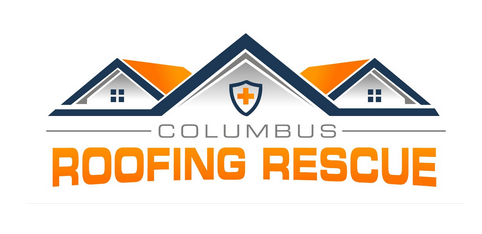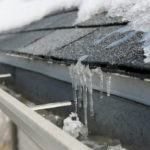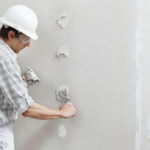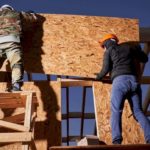
How To Safely Remove Snow From Your Roof
Winter Roof Maintenance: A Step-by-Step Guide to Removing Snow Safely
Winter can be a great season, but it can also be challenging for homeowners. One of your biggest issues in the winter could be dealing with snow accumulation on your roof. Snow buildup can and will cause significant damage to your roof, leading to leaks, ice dams, and even roof collapse. That’s why taking steps to remove snow safely and effectively is crucial. In this article, we’ll show you how to maintain your roof during winter, from assessing the snow on your roof to safely removing it without causing further damage.
Importance of winter roof maintenance
Winter roof maintenance is essential for your property’s and your family’s safety. Snow buildup on your roof can cause damage, leading to leaks, ice dams, and even roof collapse. Roof collapse is a serious hazard that can cause injury and property damage. Additionally, snow accumulation can cause ice dams, leading to water damage and mold growth. That’s why it’s crucial to remove snow from your roof safely and effectively.
Risks of snow accumulation on roofs
Snow accumulation on roofs can cause significant damage. One of the biggest risks is roof collapse. The weight of the snow and ice can be too much for the roof to handle, causing it to collapse. Additionally, snow accumulation can cause ice dams, which can lead to some water damage and possible mold growth. Ice dams happen when the snow melts on the roof and refreezes at the edge, preventing water from draining correctly. This can and will cause water to back up under the shingles and cause leaks and water damage.
How to safely remove snow from your roof

Removing snow from your roof is not a task to be taken lightly, and it’s crucial to take the appropriate actions to ensure that you and your property are safe. Before you begin removing, make sure you have the necessary tools and equipment. You’ll need a roof rake, a ladder, and safety equipment such as a harness and safety glasses. It’s also important to wear sturdy shoes or boots with good traction.
When removing snow from your roof, start at the edge and work inward. Use the roof rake to pull the snow off the roof, being careful not to damage the shingles or gutters. Don’t try to remove all the snow at once. Instead, remove a layer at a time, working your way down the roof. If you encounter ice, use a plastic shovel to scrape it, and be careful not to damage the roof.
Tools needed for snow removal

1. Roof rake: A roof rake is a long-handled tool that allows you to remove snow from your roof without climbing on it. It has a blade at the end that slides under the snow and pulls it off the roof.
2. Ladder: A ladder is necessary to access the roof. Make sure the ladder is sturdy and positioned in a stable location.
3. Safety equipment: Safety equipment such as a harness and safety glasses are essential to ensure your safety while removing snow from the roof.
A step-by-step guide to removing snow from your roof
Here’s a step-by-step guide to removing snow from your roof safely and effectively:
1. Assess the amount of snow on your roof. If you have more than 6 inches of snow, it’s time to remove it.
2. Gather your tools and equipment, including a roof rake, ladder, safety equipment, and plastic shovel.
3. Position the ladder securely against the roof, ensuring stability.
4. Put on your safety equipment, including a harness and safety glasses.
5. Begin removing snow from the roof with the roof rake, starting at the edge and working your way inward.
6. Remove a layer of snow at a time, working your way down to the roof’s surface.
7. If you encounter ice, use a plastic shovel to remove it, being careful not to damage the roof.
8. Once you’ve removed the snow, sweep off any remaining debris with a broom.
Preventing ice dams and icicles
Ice dams and icicles are common problems in the winter months. They occur when snow and ice accumulate on the roof, preventing water from draining properly. This can cause water to get under your shingles, leading to leaks and water damage. Ensure your attic is adequately insulated and ventilated to prevent ice dams and icicles. This will prevent heat from escaping through your roof, which can melt snow and ice. Also, make sure your gutters are free and clear of debris, which can prevent water from draining properly.
Signs of roof damage and what to watch out for
Winter weather can cause damage to your roof. That’s why it’s vital to watch out for signs of damage, such as:
1. Leaks: If you notice water stains on your walls or ceilings, it may indicate a leak.
2. Sagging roof: A sagging roof can be a sign of structural damage, which can be caused by snow accumulation.
3. Damaged shingles: Damaged or missing shingles can be an obvious sign of damage to your roof.
Winter roof maintenance tips
Here are some additional helpful tips for maintaining your roof during the winter months:
1. Trim tree branches: Overhanging tree branches can cause damage to your roof, particularly during winter storms. Make sure you cut any tree branches that are too close to your roof.
2. Clean gutters: Make sure your gutters are clean and free of debris, which can prevent water from draining correctly.
3. Inspect your roof regularly: Regular roof inspections will help you identify any roof problems before they become too serious.
Hiring a professional for winter roof maintenance
If you’re uncomfortable removing snow from your roof, consider hiring a professional. A professional roofer will have the proper tools and equipment to safely and effectively remove snow. Additionally, a professional can identify and address potential problems before they become serious.
Conclusion
Removing snow from your roof is essential for the safety of your family and property. Snow accumulation can cause significant damage, leading to leaks, ice dams, and roof collapse. The simple steps outlined above can help you remove snow from your roof safely and effectively. Additionally, you can protect your property from water damage by preventing ice dams and icicles. Regular roof maintenance on your home is essential to ensure your roof’s longevity and prevent costly repairs.



